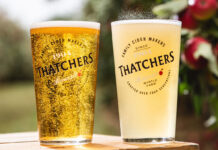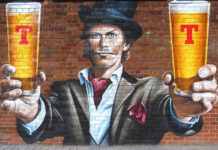Choosing workwear should be a balancing act of presentation and practicality

STAFF presentation leaves a lasting impression on customers, and can be a key marketing tool for a quality outlet.
That was the message from workwear firms contacted by SLTN, who said that, as brand ambassadors for a business, staff appearances count.
Ruaraidh Macleod, managing director of Kylemark Corporatewear, highlighted the growing importance of presentation standards in the on-trade.
“A simple cheap looking printed T-shirt used to be the standard for many bars across the country, but now with service standards and customer expectations rapidly on the rise the importance of having smart well dressed staff who are easily identifiable to the customer is a crucial factor in the success of any bar,” said Macleod.
“Formal shirts with crisp bib aprons are very much on trend at the moment with many establishments keen to promote their brand with quality embroidery of logo to the front of the apron and often to the back nape of shirt.”
Professional-looking workwear is also a key part of the marketing mix for an outlet, said Craig McArthur of specialist branded clothing and merchandise firm R&D Miller.
Having smart well dressed staff is a crucial factor in the success of any bar.
“First impressions, reputation and word of mouth is one of the best marketing tools a brand can have, so ensuring that your staff reflect the concept of the company brand values is essential,” he said.
“It is a very subtle form of making a customer feel relaxed in the surroundings and, in turn, makes for a better customer experience.”
Achieving high presentation standards without compromising on practicality is key, said McArthur.
“You definitely want to be looking at garments which are of good quality and are suitable for the environment they will be used in,” he said.
“For example, staff working in a place which is very warm, such as a bar, nightclub, or kitchen, will maybe prefer a lighter weight garment as opposed to staff who are working outside.
“Ultimately it comes down to budget and finding the very best garments to fit that budget.
“There are two main factors that determine that: the quality of the garments purchased and the purpose of their use.”
And operators who want to stay relevant should be prepared to update their staff uniforms to keep pace with current styles, said McArthur.
“Just as the high street trends change, so too does the fashion from a uniforms perspective,” he said.
“The right uniform is a fashion trend in its own right so the industry is constantly changing and improving the options available to businesses.”
In the kitchen, where staff are handling food, practicality in workwear is particularly important, according to Rick Shonfeld, commercial director of chefswear specialist Tibard.
“Most wearers are quite ‘hands-on’, so garments that are machine washable at 40 degrees are a big bonus,” he said. “To that end, poly, wool, and lycra blends are increasingly popular amongst front of house staff as they offer this as well as comfort, durability and good crease recovery.”
David Hill, sales and marketing director at Johnson’s Stalbridge Linen Services, said that cotton, polycotton and polyester are currently the most popular fabrics for workwear.
“The trend has been away from cotton, which can shrink, leaving staff wearing the wrong sizes, which in turn is uncomfortable and lacks appearance,” he said.
“Polycotton is an ideal choice as it holds its shape and colour, it is easy to iron and finish and it can breathe, an important factor in the kitchen. Clean, comfortable and smart chefs’ wear is a top priority for the most important people in your kitchen.”

























